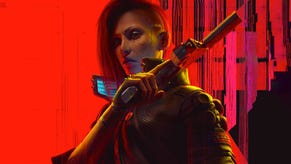Phantom Liberty and Patch 2.0 make Cyberpunk 2077 the game it should’ve been: a must-play classic
Finally, CDPR has realised its lofty vision with Cyberpunk 2077: Phantom Liberty irons out the bugs and makes this a classic.
Cyberpunk 2077 was always good. Deep down, underneath the disgraceful mess that was the last-generation version of the game and controversy about some of its tonal elements… there was a really good game. A truly great game, even. With that said, the public battering that developer CD Projekt RED took for the state of that launch game was worth it. It’s even more worth it now.
The value of the critical pillorying that the launch version of Cyberpunk 2077 took is multifaceted, but with the release of the game’s official ‘version 2.0’ and its new expansion, Phantom Liberty, we can now say the most important purpose that kicking served was simply to light a fire under the company behind it.
CD Projekt RED considers itself an independent developer of honor; and the only way to repair and maintain that reputation was to set the game right. With Phantom Liberty and its accompanying free update to the base game, the dark future of Night City fulfills its potential - and honestly, if taken as a new release, it’s probably one of the best games of 2023, a truly stacked year.
While my primary focus here is a review of Phantom Liberty, I do just want to talk about version 2.0 of the main game for a moment. As well as eye-popping and borderline experimental graphic technology that looks utterly ridiculous if you’ve got a powerful enough PC, version 2.0 is a complete overhaul of Cyberpunk’s systems. This is a large enough update that many developers would’ve undoubtedly charged for it - but this thoughtful reset is free to all owners of the game on PS5, Xbox Series, and PC. Last-gen players are sadly out of luck; Cyberpunk’s final update in that guise was patch 1.6.
That sucks if you bought the game on last-gen and haven’t yet got access to a newer machine - and CD Projekt’s decision to push the game out on consoles clearly not ready for it will forever be a black mark against its reputation. But as I said this time last year, this is also what the game desperately needed to do - to cut the under-powered dead weight - and that has essentially allowed it to soar.
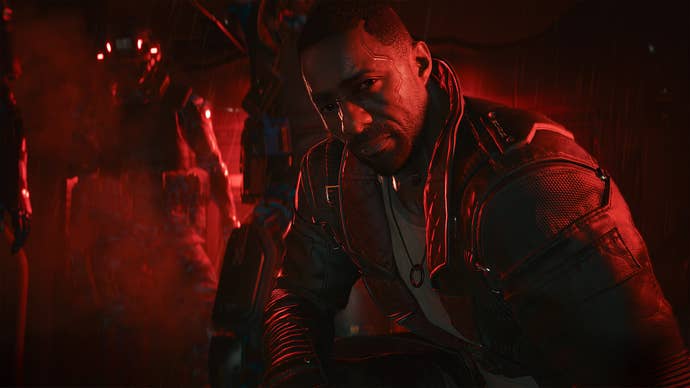
There’s just… a lot of new stuff. Skill trees have been rethought, retooled, and re-deployed with many skills that are all-new or so different as to be unrecognizable. A lot of things the game was mocked for even when it was alright, like the lack of a proper GTA-style police response system or some combat AI goofiness, have been directly addressed. But then you can see how one thing has led to another in developmental terms: a proper police response means car chases, which in turn invites proper car combat. So now you can swing a samurai sword from the side of your bike or blast lead from the windows of your car - but you can also quick-hack enemy vehicles or even strap Mad Max-esque weaponry to cars.
The rethink of the Cyberware and Perks system is the most impactful thing, however - and it’s all smartly-done. Armor is rightly decoupled from clothing at last, and is now tied to your Cyberware, the body modifications that define Cyberpunk’s world. The systems around equipping Cyberware are less restrictive than before, with how much you can equip tying back to your skill tree choices. Rest assured, it is all better.
In fact, as I recently opined on Twitter, or X, or whatever bloody name we’re now calling it - when Cyberpunk 2077 is firing on all cylinders, it’s happily a 10/10, a must-play, an excellent game. I’d go so far as to say it's as good as The Witcher 3. I’d go further: when it’s good, I prefer this game to The Witcher 3. Put that pitchfork down! To be honest, I felt that way before. But the difference with the latest update is that smart changes, sleek additions, and a general tightening up of the experience technically and otherwise means that you’re far more often able to enjoy the best of Cyberpunk without distraction.
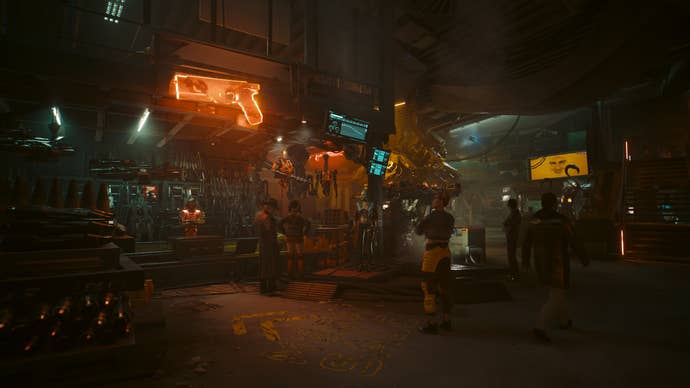
So, with update 2.0 noted, we can now talk about Phantom Liberty in earnest. The Witcher 3’s Blood and Wine expansion in particular is one of the all-time greats, a subline send-off to Geralt and to the series as a whole for a company knowing it was going off to the difficult task of incubating an all-new property. Now, even with sequels on the horizon, Phantom Liberty is a farewell to Cyberpunk 2077 - but I also think it’s something of a promise of what this universe can do.
Phantom Liberty is similar to the main game in tone, but offers just enough difference to stand apart. It’s less about corporate and gang warfare and is more of a proper ‘espionage’ thriller that sees V contacted by a mysterious figure who promises they can cure V’s ailment - something that is possible in the main narrative of the core game, but only at great cost. Night City has no happy endings, it seems - but the DLC entices the player and protagonist alike with the promise that this time, perhaps, things can be different.
The trip takes V to Dogtown, a previously-inaccessible, heavily-guarded area of Night City. Dogtown is within the city limits, but isn’t under the control of the city itself. It’s basically a fiefdom of a mercenary king. Instead of police, his private militia keeps a fragile peace through force and fire. Night City is meant to be the worst place in America - but its streets feel utterly controlled and calm compared to Dogtown.
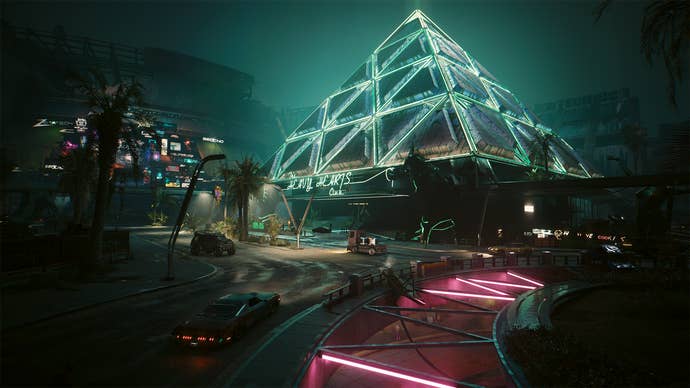
The start of the DLC offers some cinematic storytelling up there with some of Cyberpunk’s best, rivaling things like the big heist mission, the Johnny flashbacks, and the game’s finale. V has to sneak into Dogtown, and then watches helplessly as a jet carrying the President of the New United States is downed, crashing within Dogtown’s limits. Thus begins a mad scramble to reach and save the President from bloodthirsty mercenaries who want to collect on her.
Once united with the President, there’s a wonderful section of either stalking or fighting through streets, bypassing checkpoints meant to stop the leader of Cyberpunk’s free world from escaping to a safe house. It’s tense, tightly-wound stuff, and a perfect playground to test out 2.0’s new skill trees, including the Phantom Liberty exclusive ‘Relic’ tree that unlocks particularly powerful new abilities.
The President arranges a meet with agent Solomon Reed (Idris Elba), and from there Dogtown opens up. V becomes free to come-and-go, and at this point Phantom Liberty is no longer just a rollercoaster of a story - there’s a whole new city zone for you to explore, complete with Cyberpsychos, new vehicles, stores, clothes, weapons, side quests, gigs, and more. There’s even a couple of all-new mission types. Meanwhile, the espionage adventure continues in ever-escalating, brilliantly-designed main missions.
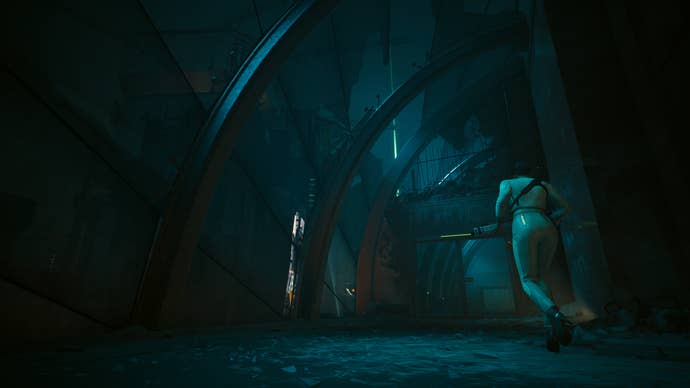
Within the side content, one thing I really like is how Dogtown meshes with Night City as a whole. Once you’re free to come and go as you please, side quests and missions will occasionally criss-cross in and out of Dogtown’s borders, back to the city proper. In this, it feels less like an isolated ‘expansion space’ and more part of the Cyberpunk story proper.
A lot of DLCs like this feel self-enclosed - but through sending you back into Night City here and there and by having the odd familiar character show up, even if it’s just fixers, Dogtown feels properly rooted to the main game. It didn’t feel weird when, partway through my Dogtown spelunking, V’s phone rang and it was Judy, with a fateful call from the main story that from past experience I knew I had to respond to right away. I hopped in a car, passed the scans at Dogtown’s heavily-guarded border, and raced back to the city proper. It feels right in the flow of the game.
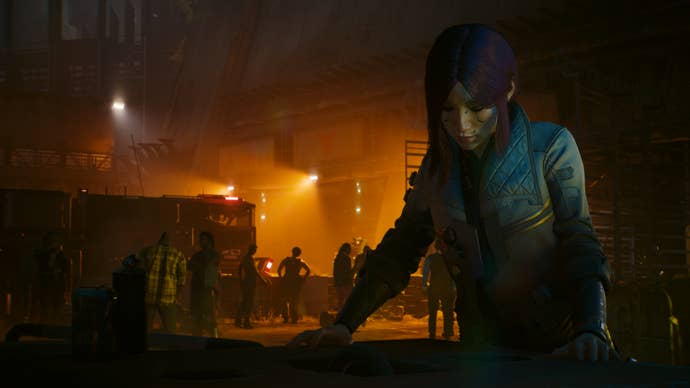
The main story missions, meanwhile, are sublime. Elba is having a lot of fun, which sure helps. But really, this is the best kind of DLC: a team that has experimented with and mastered its game systems and engine - and now knows how to stretch them to their maximum potential. Phantom Liberty is like a Cyberpunk 2077 greatest hits package - with glorious new stuff sprinkled atop it. There’s more spectacle, more challenge, and more chance to flex your RPG muscles with interesting character builds. I should note, too, that this logic crosses over into some of the expansion’s side missions, too. I found a couple of gigs with battles and dilemmas that felt akin to main story missions.
The point, anyway, is that Phantom Liberty is a developer on its A-Game, determined not only to give a previously-troubled game a good send-off, but also clearly keen to demonstrate what it can do. It’s a bittersweet feeling, too, because we know that CDPR plans to abandon its RED Engine, which powered The Witcher and Cyberpunk, for Unreal. Looking at this now system-rich and incredible-looking game and expansion (though I am running it on a 4090 with DLSS and everything maxed, to be clear), it’s hard not to feel a pang of sadness that this exact setup may not be used again, given how good Phantom Liberty is.
If you’ve already played Cyberpunk, this expansion is a good enough reason to return, and when combined with Update 2.0’s changes, will actually serve quite well to make it feel like a whole new experience. If you skipped it back in 2020 because of all the problems, the good news is that this is no longer a game with potential or a good game that hints at true greatness - it’s not truly great. It’s finally the follow-up I hoped for - nay, expected - from the team that made The Witcher 3. It’s a must-play.




